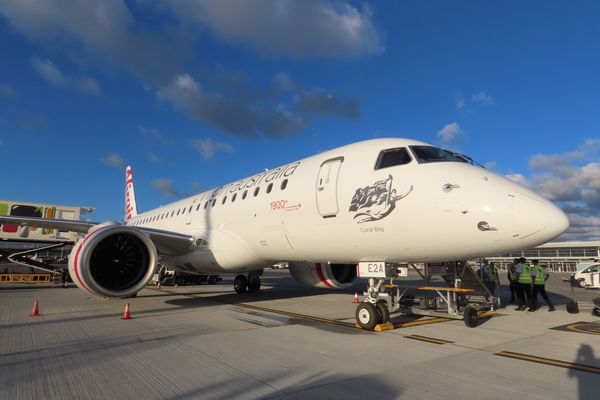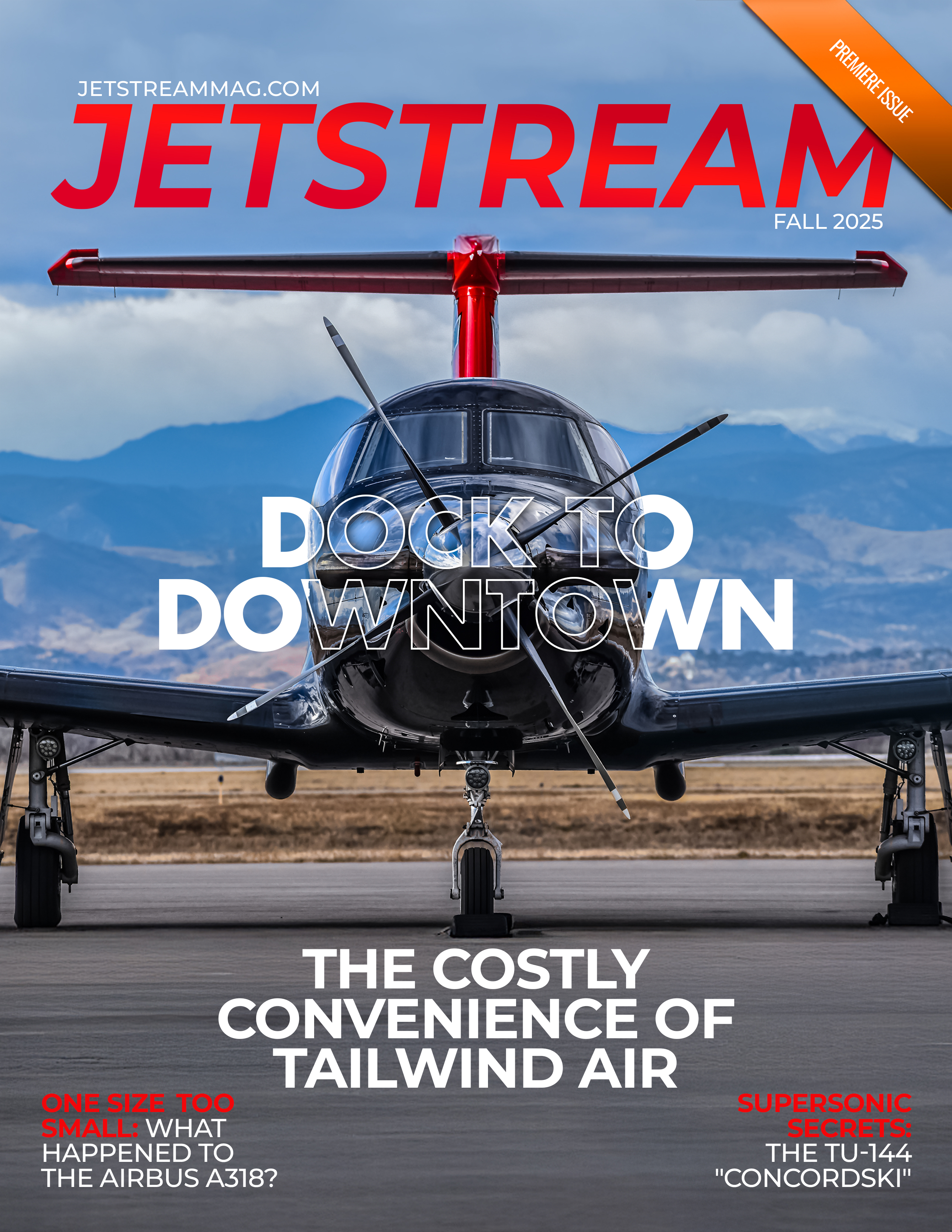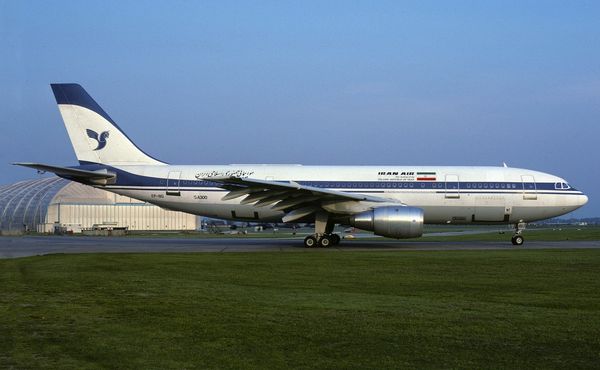By Hadi Ahmad
The United States, being one of the world's largest aviation markets, is home to numerous airlines and a rich, dynamic aviation history. However, despite the size of the domestic market, the sector is largely dominated by four major players. Let’s examine why this is the case and what events led up to shaping the current affairs of American aviation.
An Oligopoly?
The United States’ domestic market can, in a way, be described as an oligopoly. This term refers to a market dominated by a small group of companies, often because multiple barriers to entry exist that are significant enough to discourage potential competitors.

Examples of such barriers to entry in the American airline industry include high airline startup costs, infrastructure constraints such as takeoff or landing slots, and the large economies of scale that various incumbents currently hold.
Four U.S. carriers combine for just over two-thirds of the domestic airline market share. As of February 2024, this amount was 68%. However, taking factors like wholly-owned regional airline subsidiaries into account, those four airlines control nearly 80% of the domestic market share. It is worth noting, though, that no single carrier’s market share reaches 20% overall.
As of February 2024, Delta Air Lines controlled the largest domestic market share at 17.8%, based on domestic revenue passenger miles over the previous 12 months. American Airlines and Southwest Airlines were close behind at 17.5% and 17.3%, respectively, while United Airlines came in fourth at 16%.

Blocked Merger
These four airlines have dominated the domestic American market for a very long time, making it challenging for other airlines to grow their share. A prime example of this case was the proposed 2022 acquisition of Spirit Airlines by Frontier Airlines. This deal was worth $6.6 billion, and combining these two ultra-low-cost airlines would create the fifth-largest U.S. carrier. These two airlines combined for a domestic market share of 8.7%.
However, this acquisition was unsuccessful, primarily because another U.S. carrier, JetBlue Airways, beat Frontier to secure the deal to acquire Spirit. Eventually, JetBlue was also unsuccessful in its attempt to take over Spirit, as the United States Department of Justice ruled it counterproductive to antitrust law.
Maiden Brazil: Virgin Australia Welcomes the Iconic Embraer E2
The primary focus of antitrust laws is to prevent monopolization of markets and, thus, promote fair competition among businesses. In essence, when no single company dominates a market, multiple firms can compete freely, particularly on pricing. This competitive environment typically drives prices down, as no one company has the power to unilaterally dictate rates.

In the case of airline mergers, the United States Department of Justice is very harsh in this area, as further consolidation of airlines eventually results in fewer players in the market. Thus, this limits competition and can result in higher fares for American consumers.
Domestic Airline Competition
The United States' Airline Deregulation Act became law in 1978. This act was intended to increase competition, and as more airlines entered the market, fare prices decreased in the 20 years that followed the act's passing.
Deregulation, ironically enough, also led to more airline consolidation. Because of the increased competition among players, certain companies found it difficult to compete. As such, opting to merge with a larger carrier ended up being their last chance for survival.
Comfort at a Cost: The Silent Death of the Airbus A340
Each of the four U.S. airline mergers within the first two decades of the 21st Century has resulted in airlines that now comprise the "Big Four" American carriers. These mergers were those of Delta and Northwest in 2008, United and Continental in 2010, Southwest and AirTran in 2011, and American and U.S. Airways in 2013.
| Merged Airlines | Merger Date | Fleet Sizes Before Merger | U.S. Market Share Before Merger | Current U.S. Market Share |
| Delta Air Lines (DL) & Northwest Airlines (NW) | October 29, 2008 | 460 (DL) 360 (NW) | 14% (DL) 12% (NW) | 18% (DL) |
| United Airlines (UA) & Continental Airlines (CO) | October 1, 2010 | 360 (UA) 340 (CO) | 12% (UA) 11% (CO) | 16% (UA) |
| Southwest Airlines (WN) & AirTran Airways (FL) | May 2, 2011 | 550 (WN) 140 (FL) | 17% (WN) 3% (FL) | 17% (WN) |
| American Airlines (AA) & US Airways (US) | December 9, 2013 | 620 (AA) 340 (US) | 18% (AA) 9% (US) | 18% (AA) |
Of the four main U.S. carriers today, three of them are called Legacy Airlines. These carriers — namely Delta, United, and American — are referred to as such because they operated in the American aviation industry before deregulation in 1978.
However, by this logic, why is Southwest not considered a legacy airline, given it also existed before 1978? The answer lies with Southwest's business model.
Legacy airlines typically followed a hub-and-spoke route structure, where many flights were operated from one main hub city to a series of smaller spoke cities. This would promote opportunities for connections, where passengers could fly from one city to that hub, then to another city.
Southwest Airlines took a different approach, opting for a point-to-point route model instead of the traditional hub-and-spoke system. This strategy allowed the airline to operate direct flights between less congested city pairs, minimizing layovers and improving aircraft scheduling, which proved to work better with the airline's low-cost business model. Founded in 1971, seven years before the Airline Deregulation Act of 1987, Southwest remained relatively small and less entrenched in the market compared to older legacy airlines. As such, it was not subject to the same level of federal regulation, giving it greater flexibility to grow and innovate in the newly deregulated market.
A Tightly-Regulated Market
Various lawmakers have accused the American aviation industry of conspiring to influence anti-competitive practices. U.S. Senator Richard Blumenthal noted that "Consumers are paying sky-high fares and are trapped in an uncompetitive market with a history of collusive behavior."
Such concerns prompted a probe into the airline industry by the Justice Department in 2015. Eventually, there was no hard evidence found to propel a court case toward alleged anti-competitive practices.
In recent years, the Department of Justice has taken a firm stance against airline mergers, alliances, and partnerships.

While the failed acquisition of Spirit Airlines by Frontier or JetBlue are well-known examples, American Airlines and JetBlue also came under government fire regarding their proposed "Northeast Alliance." This partnership, formed in 2020, was focused on the prominent New York and Boston markets, both of which are hubs for the two airlines. The alliance aimed to strengthen both airlines' presence in the Northeast region by coordinating operations at major hubs like New York-LaGuardia, New York-JFK, Newark, and Boston.
Ultimately, this alliance was unsuccessful, as the Department of Justice sued to dissolve it, arguing that it reduced competition and harmed consumers. JetBlue subsequently terminated the alliance, and American Airlines is pursuing legal action against JetBlue over damages related to the failed agreement.
United and JetBlue Under Scrutiny
As of May 2025, JetBlue has entered into a partnership with United. This "Blue Sky" agreement will allow customers to book flights on either airline's website and earn reciprocal loyalty points. While not a merger, the partnership has benefits for the airlines, particularly regarding their operations.
Mixed Signals: The Tragic Story of Iran Air Flight 655
Through the partnership, United will gain access to JetBlue’s slots at JFK Airport while JetBlue will receive slots at United’s Newark hub. This step is still subject to regulatory approval, and United has not yet announced the resumption of flights from JFK.
Already, the partnership has been met with backlash from competitors. Spirit Airlines, for one, has argued that it would reduce competition and lead to higher fares. This would especially harm budget airlines, like themselves, whose business models center around offering consumers the lowest fares possible.

Most recently, Alaska Airlines completed its merger with Hawaiian Airlines in September 2024. This was approved under certain conditions: while both carriers will remain distinct identities, Alaska will completely own Hawaiian. Furthermore, the airlines agreed to maintain existing service on key routes, protect the value of their unique loyalty programs, and ensure competitive access in Honolulu. While this merger was successful, it does show how tightly regulated the domestic market can be.
The Focus on Regional Air Transport
Delta, American, Southwest, and United continue to dominate the domestic American market. Through past mergers, the airlines have been able to significantly expand their fleets by acquiring aircraft from the airlines they acquired. The same applies to their workforce, which also grew as a result of these mergers.
Another key factor for the success of these airlines is their presence in smaller communities. This is primarily true for the three legacy airlines (American, Delta, and United).
These carriers either wholly own or contract with regional carriers who fly regional jets to smaller communities across the country. In the case of American Airlines, it completely owns subsidiaries like PSA Airlines, Envoy Air, and Piedmont Airlines.
Fuel, Faith, and Four Engines: How Emirates Makes the A380 Work
Smaller communities with small airports typically only operate flights by legacy airlines — possibly one or two budget airlines depending on popularity. However, there are many examples of cities that are only served by one or two legacy airlines.
Being one of the only options for air travel in a smaller city means legacy airlines can price tickets however they please.
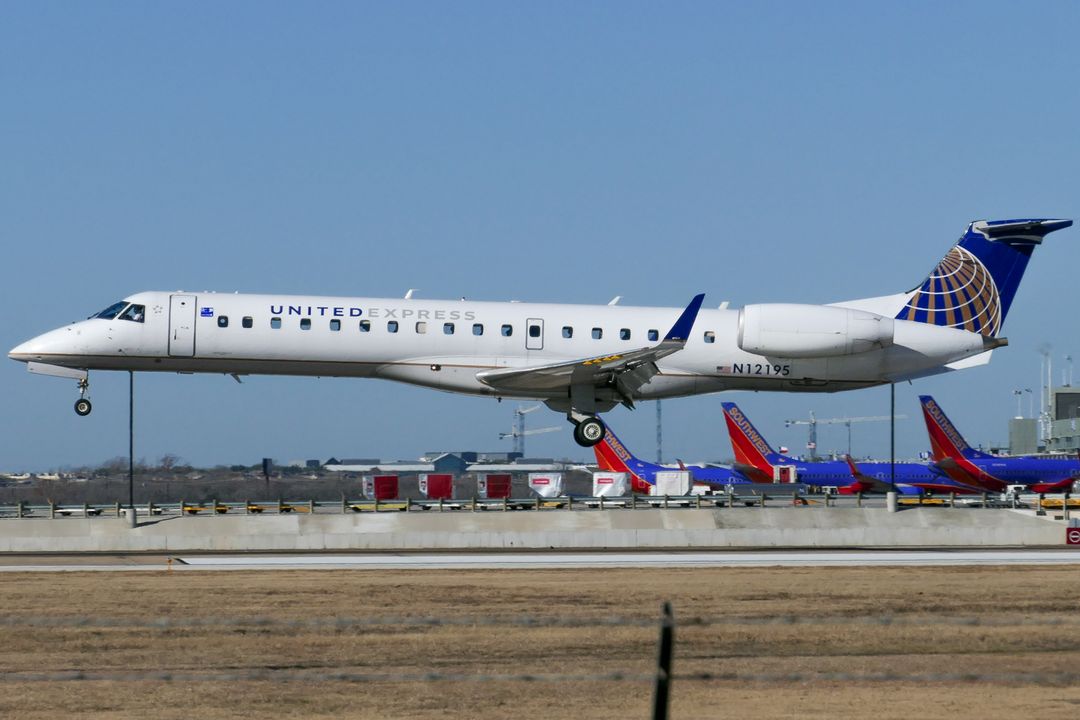
Their dominance in the realm of regional jet flying is notable, and also traces back to mergers and acquisitions.
At one point, there were multiple smaller airlines flying small "city hops" across the United States, especially between 1978 and 2001. Over time, financial struggles plagued many carriers, whose effects were only worsened by the decreased demand in the aftermath of the September 11th attacks.
Many smaller airlines were bought out by larger players to bolster their network. Eventually, the operations of these larger airlines — that we now come to regard as the legacy carriers — became too large for smaller carriers to compete.
With regional jet flying essentially monopolized by legacy airlines, other domestic carriers were never able to see any viable reason to enter these markets. As such, much of the competition that is seen nowadays between the largest airlines in the country and other smaller carriers is between larger cities and vacation hotspots.

Overall, the economics of aviation boil down to supply and demand. There is more demand between larger cities and to vacation destinations, hence why more airlines compete on these routes because they are likely to attract more customers.
However, with much larger operations out of multiple hubs, the Big Four carriers offer more flight options to customers. While many scenarios could involve layovers in one of their busy hubs, legacy carriers could offer cheaper alternatives in this manner as opposed to pricier nonstop options from other airlines.
Thus, the American airline sector is often described as an atypical oligopoly. Though the four largest airlines provide services to the majority of passengers nationwide, there is not one airline with a dominant market share.
While the American skies might not be as diverse as before, it is important to recognize the history behind America's four largest airlines. Understanding this offers valuable insight into the evolution of American aviation and reminds us that the current structure is the result of decades of transformation, resilience, and adaptation.
This content is only available with an AeroXplorer+ subscription.
When Will the Boeing 777X Enter Service? Delays, Certification, and 2027 Outlook » China Eastern Inaugurates New World's Longest Flight » Making a Stopover in Dubai? Discover How to Book a Yacht and Explore the City in a New Way »
Comments (0)
Add Your Comment
SHARE
TAGS
INFORMATIONAL Jetstream Jetstream Magazine Airlines Oligopoly Market BusinessRECENTLY PUBLISHED
 When Will the Boeing 777X Enter Service? Delays, Certification, and 2027 Outlook
The Boeing 777X was meant to be the crowning achievement of modern wide-body aviation: a folding-wing giant capable of carrying more passengers more efficiently than any twin-engine jet in history. Instead, the program has become a case study in aerospace endurance.
INFORMATIONAL
READ MORE »
When Will the Boeing 777X Enter Service? Delays, Certification, and 2027 Outlook
The Boeing 777X was meant to be the crowning achievement of modern wide-body aviation: a folding-wing giant capable of carrying more passengers more efficiently than any twin-engine jet in history. Instead, the program has become a case study in aerospace endurance.
INFORMATIONAL
READ MORE »
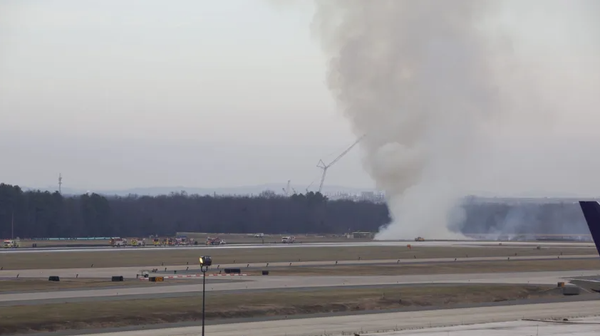 Engine Failure Forces United 777 Emergency Landing, Starts Brush Fire at Dulles Airport
A United Airlines Boeing 777-200ER bound for Tokyo made a safe emergency landing at Washington Dulles International Airport (IAD) on Saturday afternoon after an engine failure shortly after takeoff ignited a brush fire near the runway. All 275 passengers and 15 crew members aboard United Flight 803 were reported uninjured.
NEWS
READ MORE »
Engine Failure Forces United 777 Emergency Landing, Starts Brush Fire at Dulles Airport
A United Airlines Boeing 777-200ER bound for Tokyo made a safe emergency landing at Washington Dulles International Airport (IAD) on Saturday afternoon after an engine failure shortly after takeoff ignited a brush fire near the runway. All 275 passengers and 15 crew members aboard United Flight 803 were reported uninjured.
NEWS
READ MORE »
 Making a Stopover in Dubai? Discover How to Book a Yacht and Explore the City in a New Way
Planning a stopover in Dubai? Learn how to book a yacht in Dubai and explore the city’s skyline, landmarks, and coastline from a private yacht.
INFORMATIONAL
READ MORE »
Making a Stopover in Dubai? Discover How to Book a Yacht and Explore the City in a New Way
Planning a stopover in Dubai? Learn how to book a yacht in Dubai and explore the city’s skyline, landmarks, and coastline from a private yacht.
INFORMATIONAL
READ MORE »


